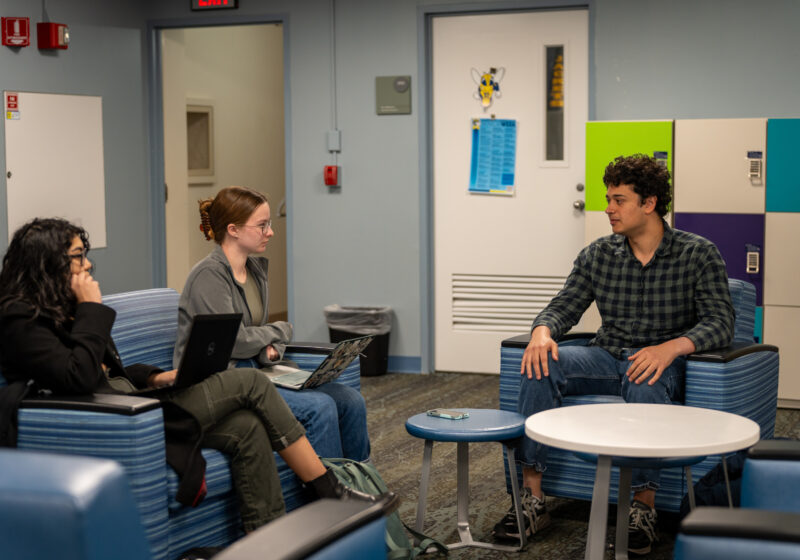University President Joel Seligman recently adopted a proposal that aims to increase faculty diversity. Seligman is moving ahead with a series of recommendations with the goal of providing opportunities for underrepresented candidates to gain positions with the University.
“I adopted all 31 recommendations because I believe they are feasible,” Seligman said.
The most important thing for those involved with the project is to afford greater opportunities to minorities and women to become professors, and then to retain them.
“Our student body is increasingly diverse, and their expectation when they walk into the classroom is to see more diversity,” Deputy to the President and Chair of the Task Force on Faculty Diversity and Inclusiveness Lynne Davidson said.
Attracting a more diverse faculty will help increase the diversity of the student body.
“If we have a more diverse faculty, then we will attract a more diverse applicant pool,” Students’ Association Senate President Alexander Pearlman said. “We need to get the professors here, and then hopefully the students will follow.”
The Task Force on Faculty Diversity and Inclusiveness, which was appointed by Seligman in February 2006, developed 31 recommendations included in a report that Seligman accepted this past week. These recommendations can be divided into four categories.
The first set of recommendations is to coordinate efforts University-wide, while still allowing for individual departments to retain their own policies. “The first set is really a set of proposals that needs more or less a central coordination,” Davidson said.
The functioning of the Special Opportunities Fund is covered in the next set of recommendations. This is an important inclusion within the proposal as it provides the necessary funds for increasing faculty diversity.
The next point in the proposal is making policy changes to the faculty handbook. The report proposed changes to the rules governing faculty employment, and if those rules get approved, they will appear in their new form in the handbook.
The fourth section of the report refers to the best practices in hiring and retaining faculty. In a sense these guidelines are applicable to all faculty, not just underrepresented minorities and women. These proposals address faculty development, such as providing mentoring and teaching skills.
Many students share the ideals of the proposal as well. “We need more diversity of thought, we want people who bring new ideas and cultures to our College community,” Pearlman said. “We want people who can share their experiences and enrich other people’s lives.”
Members of the team have high hopes for the outcome of the project.
“I believe that being the most inclusive faculty we can be will provide benefits to all in our University in terms of being the most outstanding faculty we can be in preparing our students for an increasingly competitive multicultural world,” Seligman said.
Much research went into this project. While the proposal is revolutionary for UR, it has been achieved at other universities across the nation. “A lot of what we’ve recommended here are things universities are already doing,” Davidson said.
Members of the task force traveled to other schools and invited speakers to the University to discuss the steps they had taken to increase diversity. Other steps included online research and reading academic literature on the representation of women and minorities and the bias they face in academia.
The numbers prove that something needs to be done to increase the diversity of our faculty. As reported in 2006 by the Office of Human Resources, of current professors, assistant professors and associate professors, 93 are Asian, 19 black, 11 Hispanic, 0 American Indian, 1,010 white and 155 did not specify. This means that just 2.3 percent of University professors, as indicated by the human resources data, are of an underrepresented minority group.
These numbers are most likely low, since many in the nonspecified category may belong to an underrepresented minority group, and in the past those who did not specify were entered into the system as white.
Numbers of women professors, assistant professors or associate professors was also reported by the Human Resources Office. Just 28.4 percent of these people are women, varying greatly within schools from a high of 94.1 percent in the School of Nursing, to a low of 9.3 percent in the School of Engineering.
The task force has solid goals in mind to achieve the sought after diversification of faculty. The plan will be set in action beginning Jan. 1, when Lynne Davidson becomes Vice Provost for Faculty Development and Diversity.
“I have asked Lynne Davidson, who will be heading the University plan, to draft an operations plan for the first 18 months during which I anticipate there will be progress on most or all of the recommendations,” Seligman said.
This is a highly visible project, with Davidson answering directly to the University President and Provost.
“It’s all about being the best University we can be,” Davidson said.
Myers is a member of the class of 2009.

